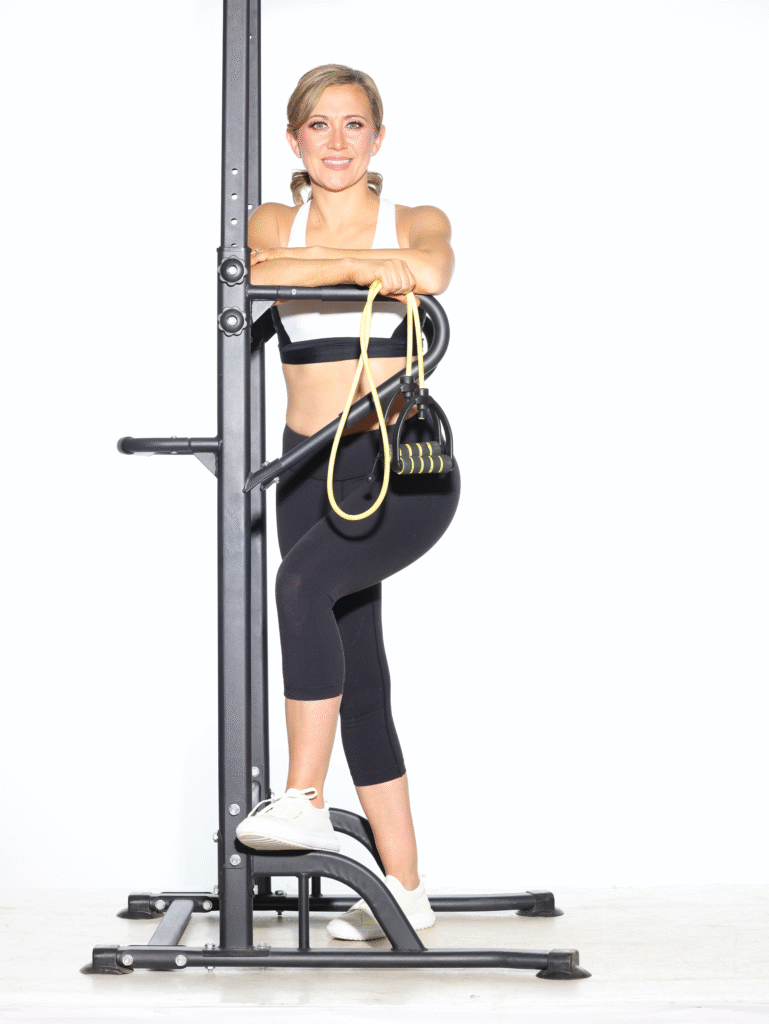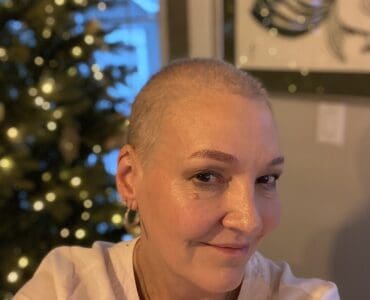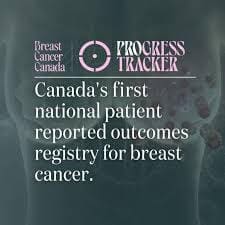Guest Blog By: Kelly Pereira, BSc, BEd NASM Certified Personal Trainer.
When facing a cancer diagnosis, one of the last things on a person’s mind is likely exercise. The fatigue, the treatments, the emotional toll—it’s a lot. But research and real-world experience confirm what specialists and survivors have known for years: exercise during and after cancer treatment is one of the most powerful tools in cancer care and recovery.
Whether you’re newly diagnosed, currently undergoing treatment, or moving into survivorship, physical activity offers physical, emotional, and mental benefits that support healing and improve quality of life.
Here’s why exercise during and after cancer treatment is such a game-changer—and how you can safely integrate it into your cancer journey.
AskEllyn Says: Read Ellyn’s blog on how exercise helped her stay fit and sane through her diagnosis and treatment
Why Exercise Matters During Cancer Treatment
Cancer treatment can be harsh. Chemotherapy, radiation, hormone therapy, and surgery all take a toll on the body. But dozens of high-quality studies show that exercise during and after cancer treatment is not only safe—it improves outcomes.
1. Reduces Cancer-Related Fatigue
Fatigue affects up to 80–90% of cancer patients during treatment. A systematic review in JAMA Oncology found that moderate-intensity exercise reduces cancer-related fatigue by 26–30% compared to no activity. Even short bouts of walking or resistance exercises can counteract energy dips.
2. Maintains Strength and Muscle Mass
Loss of muscle mass (cancer cachexia) is a major contributor to weakness, treatment intolerance, and reduced independence. Strength training just 2–3 times per week during treatment has been shown to maintain or even improve muscle strength in breast and prostate cancer patients (Schmitz et al., 2010).

3. Supports Immune Function
Moderate-intensity exercise during and after cancer treatment increases circulation of immune cells, helping the body respond better to treatment and recover from infections (Nieman & Wentz, 2019). While high-intensity workouts may not be appropriate during treatment, gentle daily movement supports immune resilience.
4. Improves Treatment Tolerance
Patients who stay active and engage in exercise during and after cancer treatment are less likely to experience severe treatment side effects and are more likely to complete their prescribed therapy without dose reductions (Courneya et al., 2007).
5. Enhances Mental Wellbeing
Up to 50% of people with cancer experience anxiety or depression. Exercise during and after cancer treatment stimulates endorphin production, reduces stress hormones, and improves sleep. In fact, Psycho-Oncology reports that exercise during and after cancer treatment reduces depression symptoms in cancer patients by up to 20–25%.
The Benefits of Exercise After Cancer Treatment
Completing cancer treatment is a milestone, but survivorship comes with unique challenges: physical recovery, emotional healing, and reducing recurrence risk. Exercise remains a powerful ally.
1. Reduces Risk of Recurrence
In breast cancer, regular physical activity (≥150 min/week) is linked to a 24% lower risk of death from breast cancer and a 28% lower risk of recurrence (Holmes et al., 2005). In colon cancer, active survivors reduce recurrence risk by up to 50% (Meyerhardt et al., 2006).
2. Improves Long-Term Side Effects
Exercise helps manage neuropathy, lymphedema, joint stiffness, and cognitive changes (“chemo brain”). Targeted strength and mobility training can improve range of motion and reduce pain by up to 30% in breast cancer survivors (McNeely et al., 2010).
3. Supports Weight Management and Metabolism
Weight gain after cancer is common and can affect prognosis. Exercise during and after cancer treatment helps regulate insulin sensitivity, reduce visceral fat, and improve body composition—factors associated with lower recurrence risk.
4. Enhances Bone Health
For survivors on hormone therapies that reduce bone density, weight-bearing exercise during and after cancer treatment and resistance training can increase bone mineral density by 1–2% and lower fracture risk (Winters-Stone et al., 2011).
5. Builds Confidence and Control
Regaining physical capacity restores a sense of agency. Many survivors report that returning to exercise helps them “feel like themselves again,” reducing fear of movement and fear of recurrence.
Tailoring Exercise to Your Unique Journey
No two cancer journeys are the same. You could join live cancer exercise classes online to exercise with your community and receive program modifications while attending class. You could also have a personalized exercise plan. At Fit2BeatDisease.ca, I offer both options and can customize fitness programs tailored to the needs of cancer patients and survivors, focusing on safety, gradual progression, and individual goals.
The Cancer-Specific Fitness Approach:
- Assessment-Based: Medical history, treatment stage, and current capabilities guide every plan.
- Goal-Oriented: Whether your aim is fatigue reduction, regaining mobility, or improving bone strength, I set realistic, motivating targets.
- Gentle & Progressive: Starting low and progressing gradually helps prevent injury and overexertion.
- Mind-Body Integration: Incorporating breathing, stretching, and mindfulness reduces stress and supports emotional healing.
- Education-Focused: I explain why each exercise matters, empowering you with knowledge.
Overcoming Common Concerns
We often hear:
“I’m too tired to exercise.”
Fatigue is real—but exercise is one of the best remedies. Even 5–10 minutes of gentle activity can boost circulation, mood, and energy.
“I don’t know what’s safe for me.”
A cancer exercise specialist knows how to adapt training for your treatment type and side effects.
“I don’t want to get injured.”
Safety is paramount. Focus on balance, stability, and gradual progress to prevent falls or strain.
Evidence Summary
Here’s a snapshot of the science:
- 150 minutes/week of moderate activity improves survival and reduces recurrence in breast and colon cancer survivors (Holmes et al., 2005; Meyerhardt et al., 2006).
- Resistance training maintains strength and function during treatment (Schmitz et al., 2010).
- Exercise reduces cancer-related fatigue by ~25–30% (JAMA Oncology, 2017).
- Weight-bearing exercise improves bone health in survivors on hormone therapy (Winters-Stone et al., 2011).
Movement is Medicine
Cancer changes your life, but it doesn’t have to define it. Exercise is not a luxury—it’s a form of medicine, one that supports healing from the inside out.
Whether you are preparing for treatment, enduring the thick of it, or rebuilding your life afterward, movement can be your ally. It’s not about pushing yourself to the brink—it’s about honouring your body, rebuilding trust in your strength, and taking back control.
At Fit2BeatDisease.ca, I am here to guide you every step of the way. Compassionate, certified professionals are ready to create a personalized fitness path that meets your needs and empowers your healing journey.
Because you deserve to feel strong, capable, and vibrant—through cancer, and beyond.
About the author
Kelly Pereira, BSc (Honours) Kinesiology and NASM-Certified Personal Trainer, is a dedicated Cancer Exercise Specialist and founder of Fit2BeatDisease. She has been seen in Strong Fitness Magazine and is an ambassador for After Breast Cancer. A breast cancer survivor and flat advocate, Kelly turned her personal journey into a mission to help others harness the power of movement to heal, thrive, and prevent disease. She leads live Zoom strength training classes and offers personalized one-on-one training programs that combine exercise, nutrition guidance, and ongoing support. Kelly also contributes to national initiatives such as the University of Toronto’s EXCEL study, which brings free cancer-focused exercise to communities across Canada. With a strong belief that “Exercise is Medicine,” she empowers people to rebuild strength, manage treatment side effects, and foster resilience, all while creating a supportive community where individuals feel seen, encouraged, and capable of achieving lasting health. Her philosophy is simple yet powerful: through movement, healthy habits, and connection, people can reclaim their wellbeing and feel supported living with confidence, strength, and hope.
Check out Kelly Pereira in the recent Best Body Guide by Strong Fitness Magazine on shelves in Canada, the U.S. and Europe. Or on the website: https://www.strongfitnessmag.com/training/workouts/upper-body-push-pull/
References
- Courneya KS, et al. (2007). Effects of exercise during adjuvant chemotherapy on breast cancer outcomes. J Clin Oncol, 25(28), 4396–4404.
- Holmes MD, et al. (2005). Physical activity and survival after breast cancer diagnosis. JAMA, 293(20), 2479–2486.
- JAMA Oncology (2017). Exercise interventions on health-related quality of life for people during active cancer treatment.
- McNeely ML, et al. (2010). Exercise interventions for upper-limb dysfunction due to breast cancer treatment. Cochrane Database Syst Rev, (6), CD005211.
- Meyerhardt JA, et al. (2006). Physical activity and survival after colorectal cancer diagnosis. J Clin Oncol, 24(22), 3527–3534.
- Nieman DC, Wentz LM. (2019). The compelling link between physical activity and the body’s defense system. J Sport Health Sci, 8(3), 201–217.
- Schmitz KH, et al. (2010). American College of Sports Medicine roundtable on exercise guidelines for cancer survivors. Med Sci Sports Exerc, 42(7), 1409–1426.
- Winters-Stone KM, et al. (2011). Resistance training reduces disability in prostate cancer survivors. Med Sci Sports Exerc, 43(2), 224–231.




